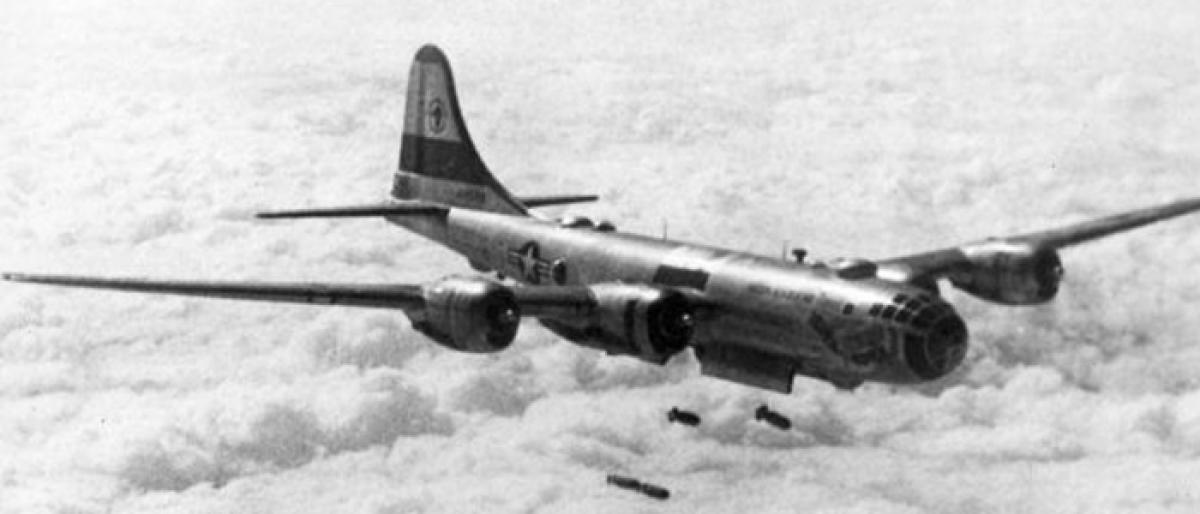Live
- Tight security arrangements at Group-II examination centers District SP
- Alia Bhatt captures attention in white
- Varun Dhawan talks about ‘Baby John’
- ‘Moonwalk’ trailer promises a quirky heist, love, and loyalty
- Combat leaf spot disease
- Ahsaas Channaopens up about her complex character in ‘Mismatched 3’
- Radhika Apte welcomes first child, shares heartfelt post
- Jacqueline dazzles at Da-Bangg Reloaded concert
- Time to boost measures to prevent drowning, save children: WHO
- TDP achieves milestone with 73 lakhs membership registration, says Chandrababu
Just In

The leaders of North and South Korea pledged at a historic summit on Friday to work for “complete denuclearisation” of the Korean peninsula. North Korea’s Kim Jong Un and South Korean President Moon Jae-in also pledged to work for peace treaty between the two countries which are technically at a war? Armistice is an agreement made by opposing sides in a war to stop fighting for a certain time; a
The leaders of North and South Korea pledged at a historic summit on Friday to work for “complete denuclearisation” of the Korean peninsula. North Korea’s Kim Jong Un and South Korean President Moon Jae-in also pledged to work for peace treaty between the two countries which are technically at a war? Armistice is an agreement made by opposing sides in a war to stop fighting for a certain time; a truce.
The Korean War began on June 25, 1950, when communist North Korea invaded South Korea. Almost immediately, the United States secured a resolution from the United Nations calling for the military defense of South Korea against the North Korean aggression. In a matter of days, U.S. land, air, and sea forces had joined the battle. The US intervention turned the tide of the war, and soon the U.S. and South Korean forces were pushing into North Korea and toward that nation’s border with China.
In November and December 1951, hundreds of thousands of troops from the People’s Republic of China began heavy assaults against the American and South Korea forces. The war eventually bogged down into a battle of attrition. In the US presidential election of 1952, Republican candidate Dwight D Eisenhower strongly criticized President Harry S Truman’s handling of the war.
After his victory, Eisenhower adhered to his promise to “go to Korea.” His trip convinced him that something new was needed to break the diplomatic logjam at the peace talks that had begun in July 1951… Whether or not Eisenhower’s threats of nuclear attacks helped, by July 1953 all sides involved in the conflict were ready to sign an agreement ending the bloodshed.
The armistice, signed on July 27, established a committee of representatives from neutral countries to decide the fate of the thousands of prisoners of war on both sides. It was eventually decided that the POWs could choose their own fate–stay where they were or return to their homelands.
A new border between North and South Korea was drawn, which gave South Korea some additional territory and demilitarized the zone between the two nations. The war cost the lives of millions of Koreans and Chinese, as well as over 50,000 Americans.
(Courtesy: History.com)

© 2024 Hyderabad Media House Limited/The Hans India. All rights reserved. Powered by hocalwire.com







